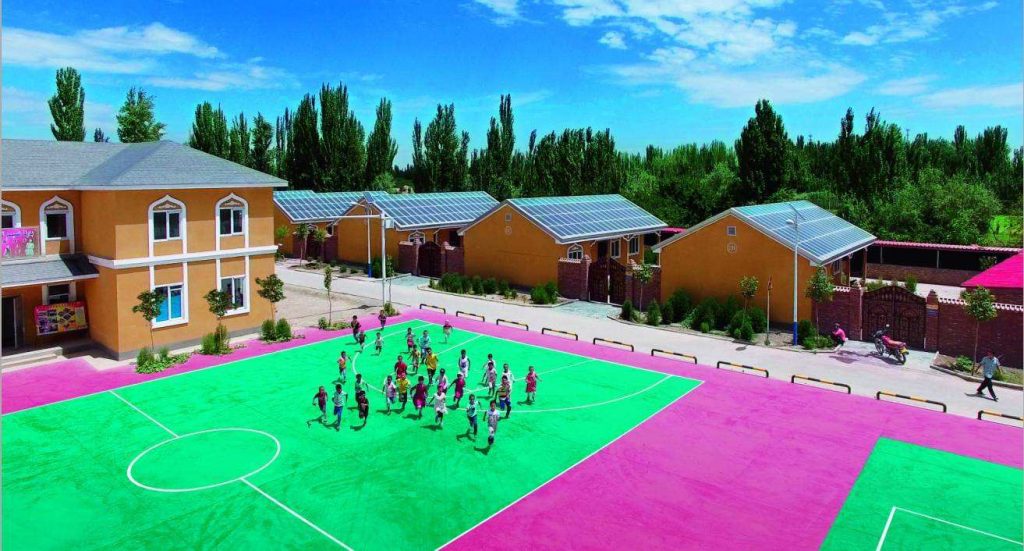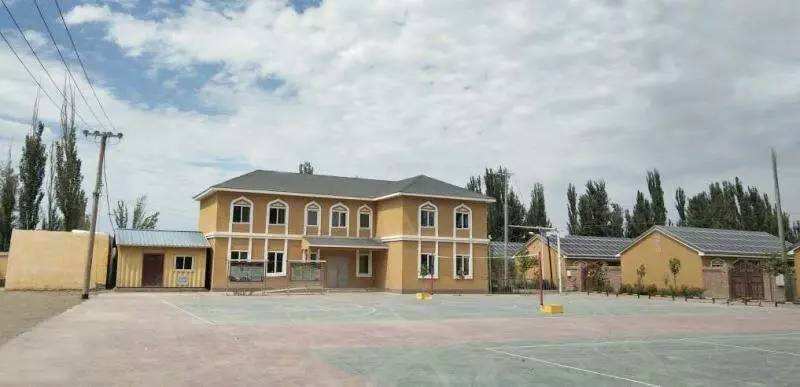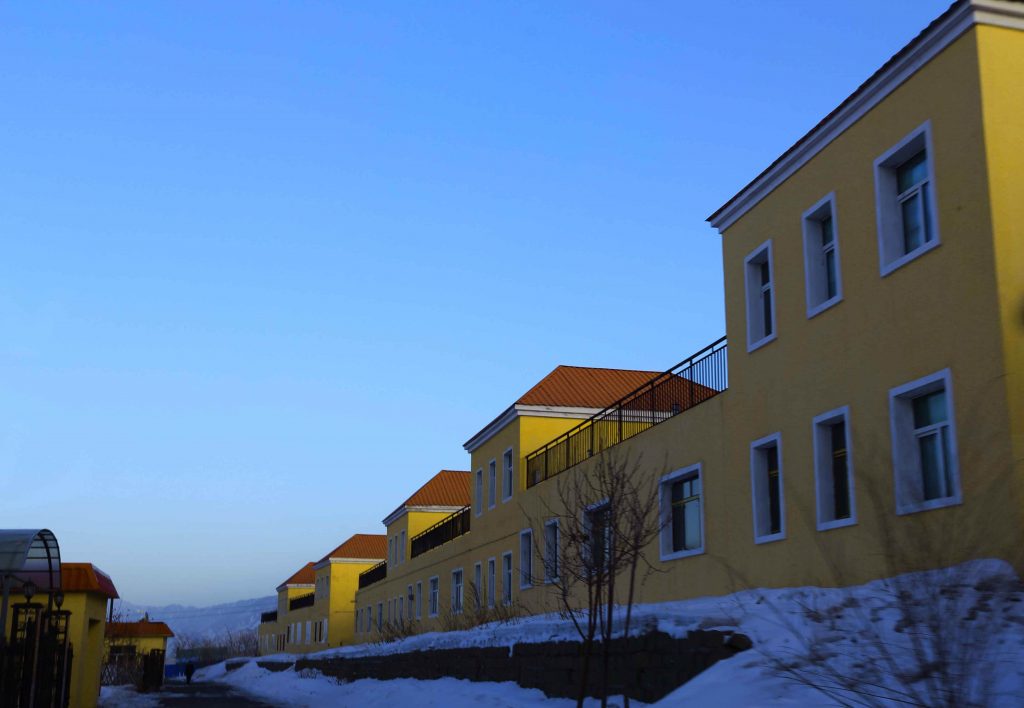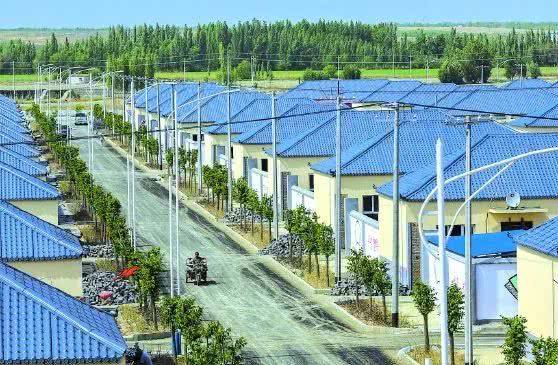The Warm Home
9 min readFor thousands of years, the houses in Xinjiang have always been associated with the shadow of shabbiness and gray. For there are two unique folk dwellings: “Diwozi”and “Adobe construction”.
“Diwozi”is the structure of which half of the house is on the ground while the other half is underground. The house is constructed simply: first dig a deep pit of many feets, and then use rose willow wickers and reeds, finally coat a piece of plastic cloth and some earth.
The advantage of “Diwozi” is that it is warm in winter and cool in summer and can resist the wind-blown sand. But the disadvantage is that it is too moist with poor ventilation.

Later, people moved from “Diwozi” into the “Adobe construction”, the lower part wall of which is constructed by tamping, while the upper part is built with soil blocks mixed with hayseed, the roof is also covered with a thick soil layer. Therefore, the construction cost of such an adobe house is very low. However when it encounters a natural hazard such as heavy rain or an earthquake, the seemingly solid”Adobe construction” will be prone to collapse.
“The most profound memory of those youths who have supported Xinjiang is the “Diwozi and “Adobe construction” dwellings, which have become the reminiscence for contrasting the past misery with present happiness, and now housing conditions in Xinjiang have been thoroughly improved Farmers in Xinjiang lived in “Diwozi” at the initial stage of the Liberation, “Adobe construction”or “Adobe house” in 1960s and 1970s, and brick houses in 1980s and 1990s but now in the new century, many of them moved into small buildings with their own entrances and courtyards in economically developed rural areas.

In the past, the adobe house is commom in Xinjiang rural areas, thick but not solid Urban residents in Xinjiang lived in single-story houses in 1960s, tube-shaped apartments in 1970s, unit buildings in 1980s, buildings of two-bedroom or three-bedroom in 1990s, and the small high-rises, duplex houses or villas in the new century. The safe and healthy tap water, clean liquefied gas, separate bathroom, cable television and Internet are available both in urban and rural areas the living conditions in Xinjiang are becoming more comfortable.
In 1985, the urban per capita floor area in Xinjiang was 14.27 square meters, and the rural per capita living area was 12.75 square meters; but in 2011, both of them doubled to 28.92 and 26.14 square meters respectively.
With the raising of the housing area, the appearance looks more impressive and the room is also decorated more delicately Before the reform and opening up, houses in Xinjiang were not decorated at all, but in the 1990s, from the gate to wall and to the floor, almost every corner was decorated, and the decoration was becoming more and more complex. At that time, a revolution in the kitchen and bathroom was launched, and most families would spend ten or twenty thousand Yuan decorating their houses. The decorative style is leaning to diversification in the new century, and it is common to ask professional designers to design in their favorite style to highlight their personality. The decoration fee would be twenty to eighty thousand Yuan, and hundreds of thousands or even millions for luxurious decoration.

Recalling the changing of dwellings in Xinjiang, it seemed to be naturally replaced with the passage of time, but actually, the housing conditions have been improved by the promotion of many major livelihood projects, such as “Earthquake-resistant housing”, “Settlement and herding promotion” and “Enrich the people, and comfortable housing”.
Low-cost housing in Jinghe County, neat and uniform Xinjiang is an earthquake-prone area, and there have been numerous earthquakes with over a magnitude of 5 from the 1950s to the present. The living conditions of farmers and herdsmen in those earthquake-prone areas are generally shabby with poor earthquake resistant standard. People in many places in Southern Xinjiang have been living in adobe houses for generations, once the earthquake disaster occurs, houses will collapse, and it will cause irrevocable casualties and economic losses. In 1985, an earthquake with a magnitude of 7.1 occurred in Ulugqat County, and then the old county town had to be relocated for it was razed to the ground.
Since 2004, the earthquake-resistant housing project was implemented in those earthquake-prone areas, first tested in Kashgar, and then started in 20 counties and cities of the four prefectures in southern Xinjiang with the gradual increase in construction funding. By the end of 2009, Xinjiang had newly built and improved seismic resistance houses of 2.27 million, and nearly half the population of Xinjiang-a total of 9.80 million people had moved into new houses.

The low-cost housing in Wenquan County, tidy and pretty On February 5, 2005, an earthquake of the magnitude of 6.2 occurred in Wushi County; on July 20, 2007, an earthquake of the magnitude 5.7 happened in Tekesi County; on March 21, 2008, another earthquake of the magnitude of 7.3 occurred in Yutian-Celle… There were 36 earthquakes of over the magnitude of 5 from 2004 to 2009, but none of those seismic resistance houses had collapsed. The project has bought effective measures against natural disasters; greatly improved the living conditions of the masses, at the same time had significantly changed the backwardness of impoverished villages.
In January 2010, a blizzard of such force which had not occurred in six decades attacked the Altay Prefecture, and the minimum temperature dropped to minus 40 degrees Celsius.
Sailike, a villager of Qiakuertu Town, Fuyun County, said, “If this kind of blizzard was encountered before, it would be hard to live through, but now, we will not suffer again, because we have already moved into the warm and strong seismic resistant houses. At present, many farmers and herdsmen are preparing to build the seismic resistance houses.
Xinjiang proposed the implementation of “Settlement and herding promotion” Project after the Central Xinjiang Work Forum in 2010.
As one of the four major pastoral areas in China, currently there are over 0.2 million pasturing households with over 1.2 million herdsmen. The common home of herdsmen is the pasturing area, and most of them still follow the nomadic lifestyle of migrating to wherever water and grass are available but the resulting problems such as herdsmen poverty, the inadequate development of education, health and culture and other social undertakings in pastoral areas plagued the economic and social development in Xinjiang.
The children of herdsmen still stay in the mountains, living the same life as their ancestors, and the population in pasturing areas shows an increasing trend. The more serious problem is the degradation of natural grassland due to over-grazing, which influences the ecological balance of the prairie, the surrounding region, and even the whole of Xinjiang. Whether from the view of the long-term development of herdsmen or the balance of the ecosystem, the advantages of such project are far outweighing the disadvantages.
In fact, as early as 1986, the Northern Xinjiang Pastoral Areas Economic Work Conference has proposed the idea to change the traditional production and life mode, and gradually realize the settlement and semi-settlemer of herdsmen. It shows that Xinjiang has formed an increasingly clear understandir and thought on improving herdsmen’s production and living conditions through the conversion of the names of projects:”Settlement and semi-settlement-“i1986,”Settlement of herdsmen”in2002,and “Settlement and herding promotion” after 2010. Grass cannot live without water, and livestock cannot live without grass, so if there is no water or grass, the project cannot be realized in a real sense. In June 2010, the water conservancy project of “Settlement and herding promotion” was started in Xinjiang to solve the problem of no fixed water source and high re-poverty rate. Central and local enterprises have invested 1.945 billion Yuan to construct 27 water conservancy projects in pastoral areas for 25 impoverished counties.
“Water plants”and houses emerged in front of the herdsmen, they need not to drink from the same well as their livestock and relocate each season.
More and more herdsmen have settled at the foot of mountains, bidding farewell to the “Domgwozi”. Settlement houses are fully equipped with water, electricity, heating installation, kitchen, rest room, and bath room with the anti-seismic- function, surrounding by activity places suitable for young and old, women and children, and there is also smooth logistics and information flows. Roads have become wider and brighter, and trees are greener on both sides. Meanwhile, leisure plazas, supermarkets, kindergartens, and service stations have also built in the pasturing areas. Herdsmen can live easily and comfortably in such a humanized and modern environment.
“Settlement” and “settle down” are only the first step, and the more important thing is to”promote pasture”and”enrich the people”. While the houses were building, the thought of”Settlement to increase contentment, and industry to increase income”was also proposed which means that the courtyards must be built to develop the courtyard economy of crop farming, breeding industry, fruit growing, manufacturing and processing to help farmers and herdsmen get rich.
In 2011, 76-year-old Yiming Mamuti who enjoyed the minimum living guarantee in Baicheng County, moved to the newly built bright and spacious house from his adobe house in which he had lived for almost half of his life. The new house is made with the seismic resistance structure of brick-concrete covering a residential area of 80 square meters, equipped with three bed rooms, one hall, one bath room and one kitchen. As well as a sheepfold of 50 square meters, henhouse of 30 square meters, and a garden of half a mu, meeting the requirements of “separate the three areas”in a true sense, which refers to the separation of living area, breeding area and planting area, and these are also the critical infrastructures to”enrich the people”.
Like the project of “Enrich the people, and comfortable housing”, when herdsmen moved into the new houses of settlement and herding promotion project, their material life has become better and better, and more important, many problems troubling nomads such as children’s education and disease treatment have also been solved. Each herdsman can quickly become rich as long as he works hard. Many of them hire someone else to herd their livestock, and engage in planting and family breeding work; many operate shops and rural home inns doing business while doing the farm work; and also many people rent their own farmland to others, and they themselves work for people who own large areas of farmlands, getting two steady incomes.
Low-income housing projects for herdsman
In November 2011, the herdsmen in Shengjin Town settlement of Turpan City were busy moving to their new home, in the past, they spent the former half of their lives herding sheep, living in “Diwozi”, eating dry naan and drinking water directly from the rivers. There was not household appliance, and living conditions were quite difficult, for the remote pasturing areas had no electricity connections What was worse, there were no schools for their children, and no timely medical treatment for the sick. But now, the project has solved all these problems, speaking of the happy future, they are all very excited: “We finally say goodbye to the days of exposing to the weather, the settlements are planned well, new houses are very beautiful, tap water is led to each house, and it is possible to watch TV at home, a road is built just in front of the houses… it is really a brand new life. “After settling, we can operate stores, do transportation work, develop the courtyard economy, we no longer live at the mercy of the weather” “There are schools for educating children and cooperative medical service for treating diseases, this is the life that we have been longing for, and we all rushed here.”
In Altay, the per capita income of settled herdsmen household has increased by 550 Yuan, most of the herdsmen started to engage in breeding and planting industry, and many open restaurants, shops, and do transportation work.
Tusken, a herdsman at Kalagande settlement of Aweitan Town, Altay City, is full of confidence for the future life after moving to a new home, “the sheep in the village, or doing business, from now on, only need to look after the 50 mu of alfalfa and wheat including my 50 sheep, are all cared by specially-assigned persons, we all engage in planting field, and cattle, there is much that I need to learn. In the past, we only got enough to eat and wear through herding, but now the government has built houses, allocated land,and built stalls for us, and also sent technicians to teach us how to do farming and breeding regularly, this is the real way to get rich I am confident that the income can be double that of last year.








